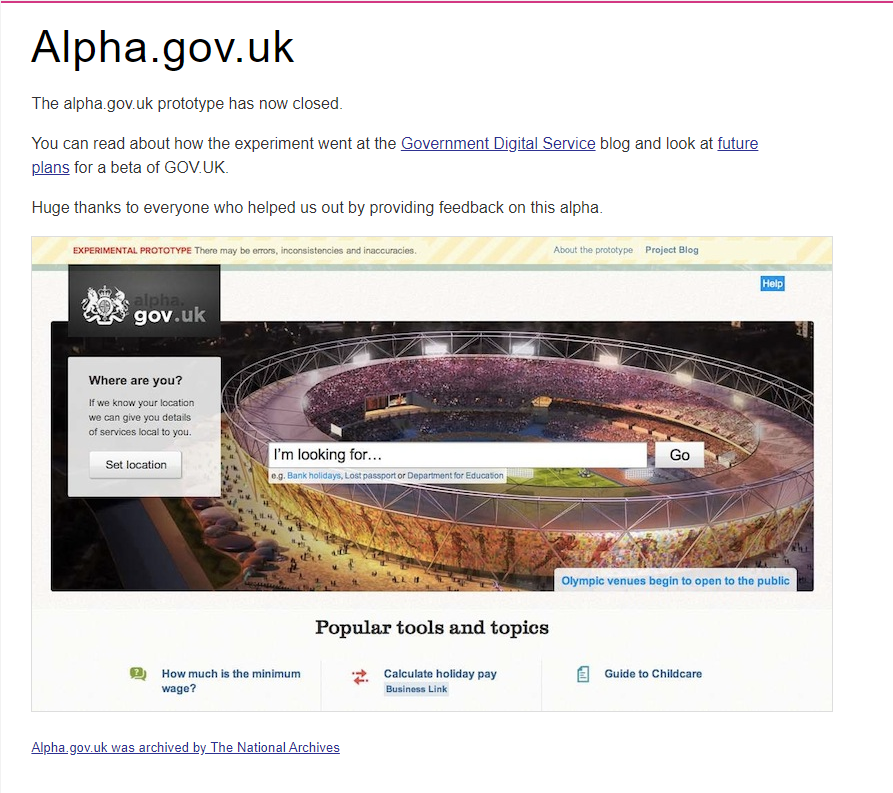From the Complex Sprawling Nonentity (CSN) to the Minimum Viable Product (MVP)
Working in the public sector I have witnessed several large digital projects that have never really delivered. They tend to start with high ambitions, gather lots of ideas about what they will achieve, and then set out to achieve it all.
Usually after a few milestones have been missed, there will be a time of reflection, assessment and then, after descoping, the project is sanctioned to continue. Afterall, the investment of so much finance, energy, time - and hopes and dreams - cannot be wasted. If ever this “Complex Sprawling Nonentity” (CSN) does deliver, too often is to an evolved user base who now need something rather different.
Instead, changing the focus to one of delivering a Minimal Viable Product (MVP) ensures something useful is delivered without too great an initial investment. The MVP then serves the function of eliciting user feedback which can be used to develop the product further - or bin it, if that is what the feedback says!
Like the CSN, the MVP draws on an understanding of what the user wants. However, this research is more penetrative, digging further into what the users actually need, what they do and, importantly, why. This information is often summarised in user stories. By delivering a core requirement quickly - the U.S. Digital Services Playbook states “no longer than three months from the beginning of the project” - the MVP addresses a user need in a timely way.
I am interested in exploring what MVPs look like in the wild, and in applying this concept to non-digital projects. In later iterations of this post (see the next sections or future posts), I will review real-world MVPs and apply the approach to address a CSN of my own - the way I approach assignment writing. Therefore, this first section of this post was created to solve for the following user story:
As an instructor I need to observe my student’s understanding of the MVP concept so that I can determine their comprehension of the topic
A example MVP: alpha.gov.uk
NB: This section uses links to archived websites which will probably be slow to load
As a student of Digital Transformation I need to describe the MVP of gov.uk so that I can cement my understanding of the MVP concept
The first release of the new website from Government Digital Service (GDS), alpha.gov.uk was an MVP based on user needs analytics of existing government digital services. This effort identified that a candidate product would allow citizens to report a lost passport, search for the dates of national holidays, as well as linking to existing services on the “official” government website, direct.gov.uk.
The prototype site offered a search option as its core function, where the existing direct.gov.uk, offered a list of links to different functions and departmental sites. To me, this is much like walking into a reception and going to a main desk to ask for help, rather than having to identify which of 20 or more desks is the correct one to approach.
Once the service was running, users could interact and provide feedback. Now, with the product in their hands so to speak, users can say what they really want to do and what the outcomes of those actions should be. All these intputs, from users and experts, are essential to developing the next iteration of the service.
By pushing out a live MVP so quickly, the GDS was opening itself up to highly qualified criticism as well as potentially confusing their users. However, as a user who has waited years to access core digital services, I find such transparency refreshing. I also wonder if I should be using this approach more in my day job in data research.
MVPs when there is ¿unavoidable? complexity
As a research scientist I need to consider how the MVP concept could be applied to implementing digital AI transformations so that I can understand if it could improve the value of my research effort
My day job is in researching the production of data for customers in the public sector. A issue is that we always have more requests for products than could ever be developed in time. The traditional approach is to research and then build a solution for each product in turn. Stepping back from this approach, our team conceieved of a method, using AI, that could shortcut much of the initial production workload of anticipated data requirements. We attempted to prove this approach by initiating work (in 2019) on a scaled down version of the solution. Unfortunately, this work encountered so many snags that that it is still ongoing.
Our naive-MVP (nMVP) was to create a method that addressed one customer data requirement. However, under-the-hood was the functionality that enabled the solution to be turned to other customer requirements. As such, the solution was massively over-engineered for the single customer requirement. Further, because the “generic backbone” of the solution was AI, scaling down in terms of system complexity (e.g. less data or simpler algorithms) can (and did) result in useless results. Therefore, one of the biggest set-backs in this work has been the repeated lack of traction with decision-makers who, understandably, want to see successful outcomes from the work.
For me, a question remains about what MVPs look like when the solution is necessarily complex and contains many unknowns, such as with AI. A coda to this case study is that an alternative AI approach, which launched out of the same initial research and at around the same time as our nMVP, has gained traction and is delivering value to a series of customers. This method does need to be re-engineered for each customer but could include the “generic backbone” to potentially reduce this effort. However, the ongoing success of this alternative AI solution means that its proving difficult to take time out of development to perform a trial that combines the two methods.
MVP as direction-setter
As a would-be decision-maker I need to articulate my remaining uncertainties about MVPs so that I can seek deeper understanding through discussion and observation
MVPs are clearly a superior approach to initiating progress towards a solution. There is, however, a degree to which they set the direction of progress such that decisions on each iteration of the product are biased by the nature of previous instances. This bias may result in some options never being explored. If the customer is served, this may be irrelevant. Of course, this issue exists with CSNs. Is there a moment, therefore, that the product that started as a MVP has become a CSN and its time to start over?


Comments powered by Disqus.